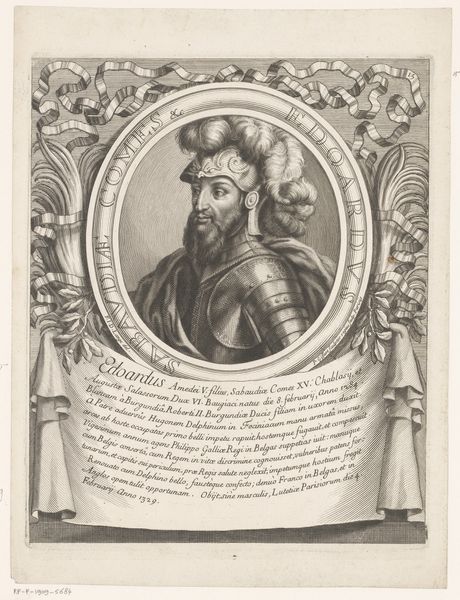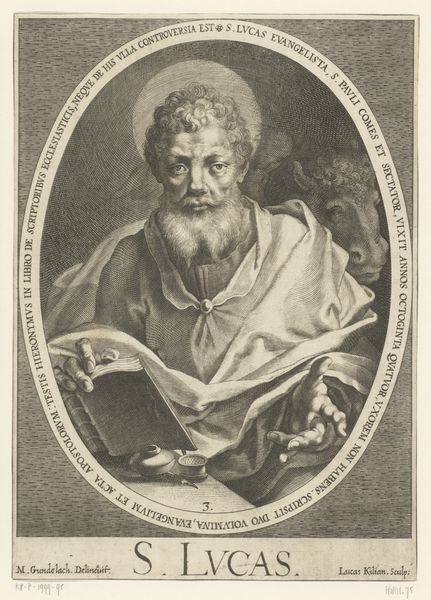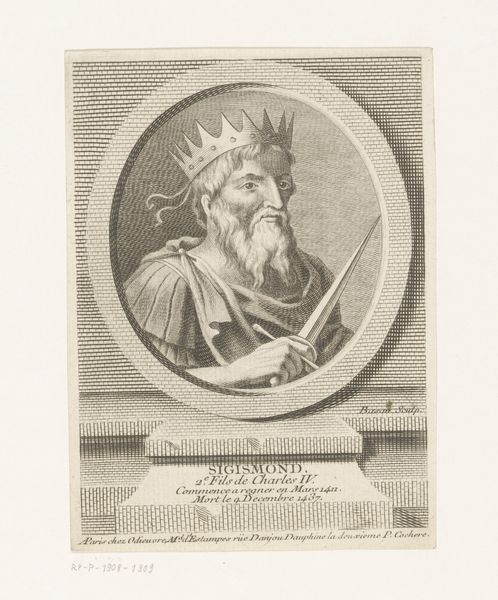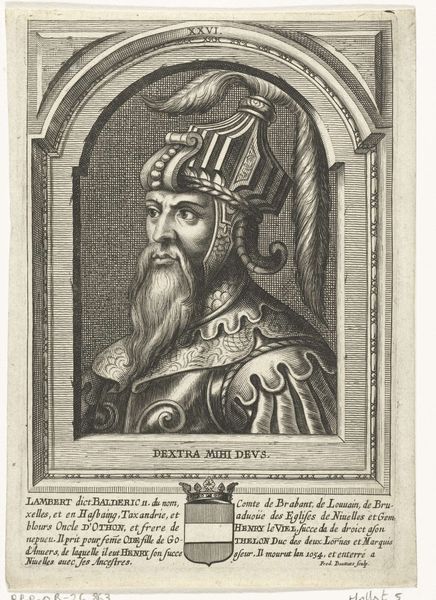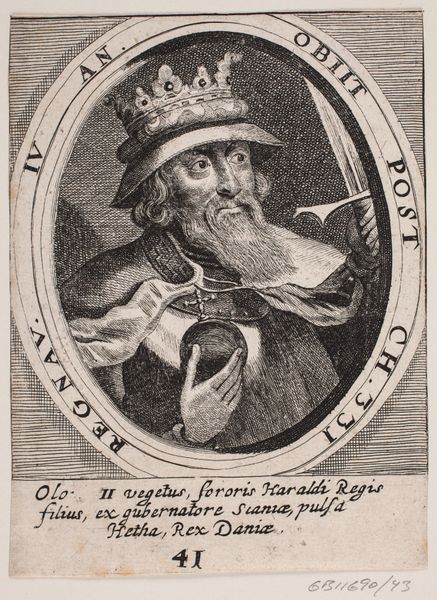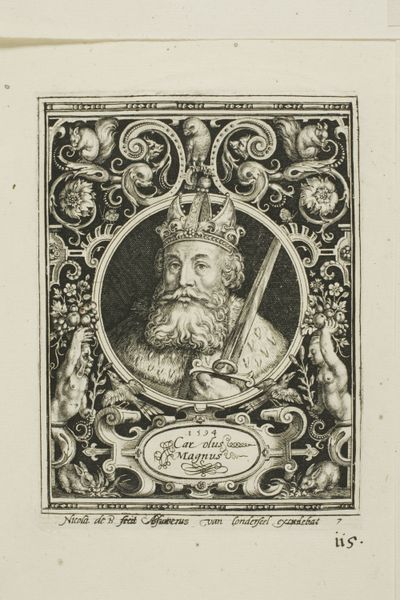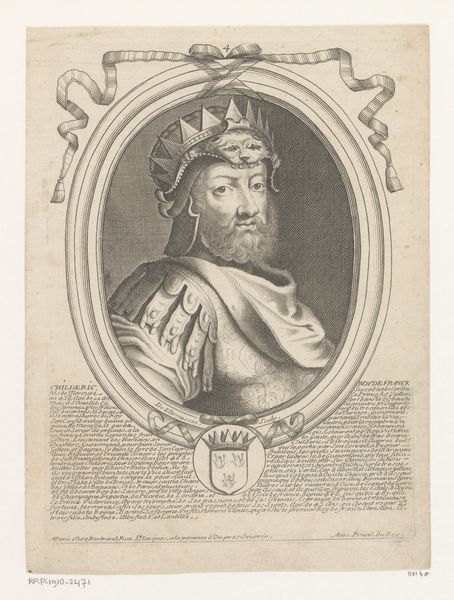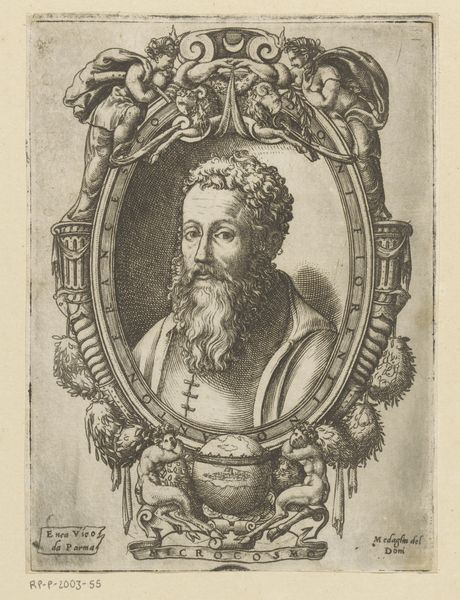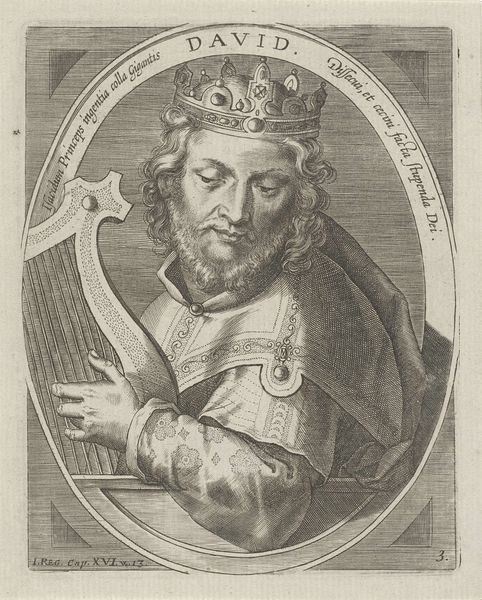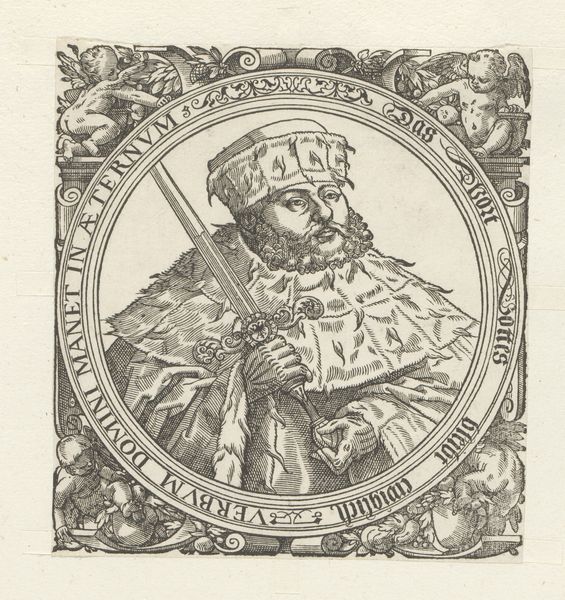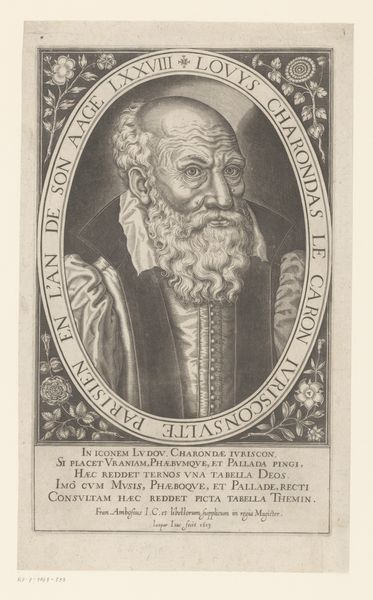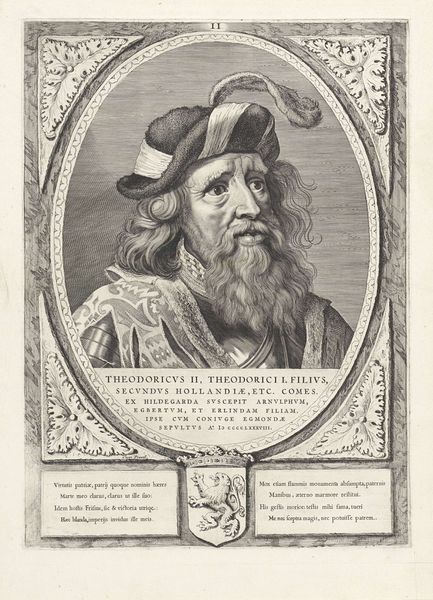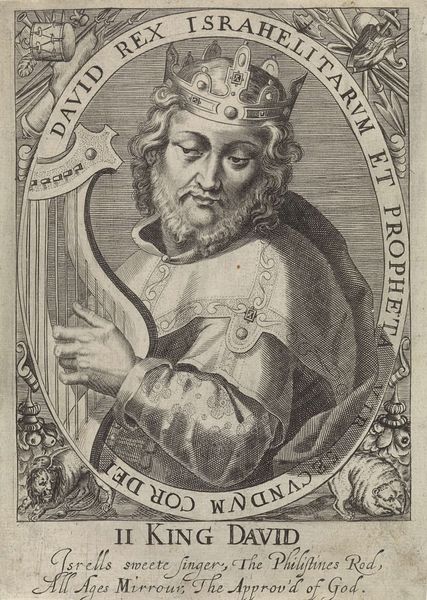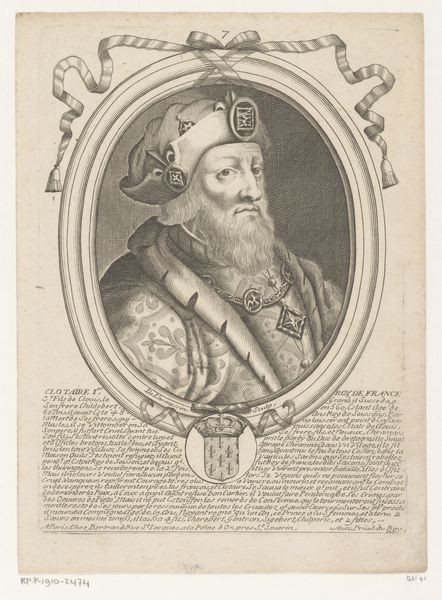
engraving
#
portrait
#
baroque
#
old engraving style
#
figuration
#
line
#
history-painting
#
academic-art
#
engraving
#
historical font
Dimensions: height 275 mm, width 219 mm
Copyright: Rijks Museum: Open Domain
Curator: I'm immediately struck by the somber expression. The details—the crown, the flowing beard, and the text, give it an almost archetypal, aged dignity. Editor: Indeed. Let’s consider the context. This is "Portret van hertog Amadeus VIII (tegenpaus Felix V)," an engraving made in 1702 by Georges Tasnière. The image, constructed through a delicate line technique, shows a figure framed by decorative elements including floral embellishments, ribbons, and an inscribed banner below. The medium is a black and white engraving print, likely reproduced using a metal plate press which suggests multiple copies, a process capable of reaching a broad, increasingly literate population. Curator: The linear quality is remarkable—notice how varied the lines are! And the way light seems to reflect off his robes through hatching and cross-hatching is expertly rendered, giving the clothing volume without color. What is communicated through that specific method? Editor: Given its creation and reproduction through printing technology in the early 18th century, this image could serve propagandistic ends. Felix V's story is controversial—he resigned from being a Duke to lead a monastic life only to be elected pope later by the Council of Basel and become an antipope for a decade. This engraving perhaps intended to legitimize or romanticize his reign and contributions. Notice the written accounts in Latin below. Who were these texts trying to convince? Curator: I hadn’t considered that. For me, the formal oval frame concentrates our attention on the duke’s likeness, fostering a kind of solemn contemplation. The lines guide your eye to Amadeus VIII. He's a man marked by history and authority. Editor: That framing device draws attention and might even monumentalize him for those with money and class status to obtain this type of artwork, while the inscriptions cater to literate clerics to inform or persuade them about his life, a combination of propaganda for different socio-economic levels of audiences perhaps? Curator: That’s an interesting thought. Considering how engraving democratized art in some sense, the very existence and dispersal of an image like this meant his legacy—whatever one makes of it—became more widespread. Editor: Exactly. So while formally, we can admire the printmaking technique, its broader impact on shaping perceptions is also quite significant to its complete understanding. Curator: Absolutely. This engraving invites a deep engagement with both form and the figures and histories they helped make. Editor: Yes, seeing this image as a record of artistic production embedded in social debates refines how we view history itself.
Comments
No comments
Be the first to comment and join the conversation on the ultimate creative platform.
